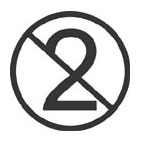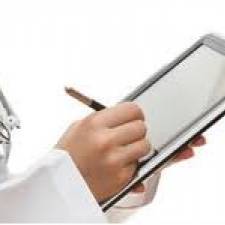 It is important that your organisation looks into every activity where medical devices are used and understands how it must care for them, making sure that they are appropriate and safe for their intended use. In healthcare environments, much of what we use to alleviate, treat or monitor the patient's ailments with are medical devices.
It is important that your organisation looks into every activity where medical devices are used and understands how it must care for them, making sure that they are appropriate and safe for their intended use. In healthcare environments, much of what we use to alleviate, treat or monitor the patient's ailments with are medical devices.
It is imperative that your organisation agree on a common understanding throughout all of its activities by what it means to 'manage' medical devices. This is usually done by writing a policy. It is the implementation of the policy that poses the greatest challenges.
There are considerable amounts of healthcare activities that involve medical devices, ranging from: purchasing of the correct items; safe disposal; maintaining and calibrating to approved standards; registering of assets and training on their safe use. The demands of departments, various staff groups, and patient's needs, for medical devices can easily become an overwhelming burden for an organisation to manage. Should organisations lose their direction and become uncoordinated, complacency sets in and medical devices start to become hazardous.
Patient Requirements
Patients expect to be treated safely. They don't expect to be harmed or killed by medical devices. They believe medical devices are there to help. They expect medical devices to work properly and to give out correct readings and results from vital signs measurement taken from their bodies. They expect the clinicians to be trained and to use medical devices safely. Patients 'feel' that they have rights and know that laws protects them from harm. They 'feel' that they should never to be harmed by a medical device. Patients expect medical devices to be managed properly.
The message from patients that is continually being heard by the healthcare officials are:
- don't hurt me.
- don't tell me you cannot learn when you have caused me harm.
- don't hurt anyone else.
- I don't want to catch an infection
There are a number of organisation involved with improving medical devices management.
National Patient Safety Agency (NPSA)
http://www.nrls.npsa.nhs.uk/
The NPSA manage a National Safety Reporting System. They receive confidential reports of patient safety incidents from healthcare staff across England and Wales. Clinicians and safety experts analyse these reports to identify common risks to patients and opportunities to improve patient safety. The NPSA work alongside Healthcare Organisations and professional groups to sets out priorities and disseminate learning.
Resources include:
- Patient safety alerts, including Rapid Response Reports
- Seven Steps series of patient safety guides
- Reporting of incidents
What is a Medical Device?
The official definition is: An instrument, apparatus, appliance, material or article whether used alone or in combination, together with any software necessary for its proper application, which is intended by the manufacturer to be used for the purpose of :
- Diagnosis, prevention, monitoring treatment, or alleviation of disease.
- Diagnosis, monitoring, treatment alleviation of, or compensation for injury or physical impairment.
- Investigation, replacement or modification of the anatomy or of a physiological process
- Control of conception.
Important distinctions should be made between single use medical devices such as a catheter or a plaster, and reusable medicals device such as an X-ray machine or a syringe driver.
Single use medical devices must never be reused and have an international symbol, as below, on their packaging.

Reusable medical devices must be decontaminated; between patient use, before undergoing an inspection or repair, or being sent through the post
The Activities of a Healthcare Organisation
As you can see from the definition of a medical device, clinicians need to use them in their work. To make sure all aspects of good governance for medical devices are addressed, consider the main issues a medical devices management system would have to deal with.
For any sound management system to succeed, the list below features key areas described in DB2006 (05). Should your Healthcare Organisation not engage with these, then errors and unsafe practices may subsequently ensue.
- Monitoring /audit
- Records
- Reporting adverse incidents
- Actions required on the MHRA Medical Device Alerts
- Acquiring the most appropriate device and rationalisation
- Equipment life cycle
- Technical specification
- Acceptance procedures for newly delivered devices
- Maintenance and repair
- Training
- Equipment inventory
- Adequacy of manufactures instruction
- Prescribing the best device
- Decontamination
- Risk management
- Transfer of ownership
- Regulatory compliances and related issues
- Legal liabilities
- Decommissioning
- Disposal
Two regulatory bodies that are important in maintaining standards for medical devices management.
Medicines and Healthcare Product Regulatory (MHRA) http://www.mhra.gov.uk/index.htm
Care Quality Commission (CQC) http://www.cqc.org.uk/
Regulators
The term "regulators" means bodies that are governmental or non-governmental organisations, who publish best practice advice and statutory and regulatory requirements to healthcare bodies, on how they should manage their medical devices.
For example, The Health and Safety Executive (HSE) have enforcement powers to ensure the Acts of Law regarding health and safety are adhered to; on the other hand, the NHS Litigation Authority (NHSLA) are advisors of good practice and recommend risk management standards and they also measure Healthcare Organisations as to how well they are managing the risks associated with their medical devices. Thus, although both organisations perform "regulatory duties" they have different powers of enforcement. It is worth bearing in mind that if your Healthcare Organisation fails to follow best practice from an advisory organisation, they will not be viewed favourably by the Law and enforcement bodies should adverse matters of a serious nature arise. Therefore, for good governance regarding medical devices management, it is important to get a "360 degree vision" of who is out there and what demands they are placing on your Healthcare Organisation.
Which have a direct impact;
- Medicines and Healthcare Product Regulatory (MHRA)
- Care Quality Commission (CQC)
- Health and Safety Executive (HSE)
- NHS Litigation Authority (NHSLA)
 The role of MHRA is to protect and promote public health and patient safety. It does this by ensuring that the manufacture and use of medicine and medical devices meet appropriate standards of safety and quality.
The role of MHRA is to protect and promote public health and patient safety. It does this by ensuring that the manufacture and use of medicine and medical devices meet appropriate standards of safety and quality.
All medical devices are regulated under European Law
There are 3 Directives:
- Medical Devices Directives
- Implantable Medical Device Directive (such as Pacemaker)
- In-vitro Medical Device Directives (such as Blood Glucose Monitor)
The MHRA issue regulatory guidance, typically the Medical Device Directive describes classification of medical devices.
They act as the UK 'Competent Authority', the regulator for the medical device industry.
- designating notified bodies
- handling application
- ensuring adverse incidents are reported
- withdrawal of unsafe devices
- effecting the Directives into Law
- Checking conformity for 'class 1'CE marked devices
- communicating risk and hazard
See: Device Bulletin Managing Medical Device Guidance for healthcare and social organisation DB 2006(05) http://www.ebme.co.uk/files/upload/stds/Managing_Medical_Devices_DB2006(05).pdf
This bulletin has great relevance. It is important to use the guidance within this document for Medical Devices Management.
Care Quality Commission (CQC)
 The Care Quality Commission (CQC) is the independent regulator of all health and adult social care in England. Their aim is to make sure better care is provided for everyone.
The Care Quality Commission (CQC) is the independent regulator of all health and adult social care in England. Their aim is to make sure better care is provided for everyone.
By high quality care, CQC mean care that:
- is safe, has the right outcomes, helps to prevent illness, and promotes healthy, independent living, is available to those who need it when they need it; and provides good value for money
The CQC are 'true' regulators, in the sense that they actually visit Healthcare Organisation and audit and interrogate their practices against core standards. The core standards for medical devices are applicable to all NHS healthcare providers. Their quality performance is measured by CQC. For medical devices, our main concerns are Regulation 16 "Outcome 11". http://www.cqc.org.uk/guidanceforprofessionals/....eassessmenttool.cfm
Health and Safety Executive (HSE)
 http://www.hse.gov.uk/ In the NHS most of the accidents are trips, slips and falls. Patient accidents are recorded for review by the HSE. http://www.hse.gov.uk/lau/lacs/79-8.htm Many 'regulators' are acting in more than one capacity; one time as advisory and the other as enforcers. If you cannot discern between what is advice and what is a mandatory action, then complacency can cause serious injury or death. A Healthcare environment is a place of work where healthcare professionals use medical devices. To this end, The Health and Safety at Work etc Act 1974 must apply. The HSE are enforcers of this Act of Law. If a patient is hurt or a Healthcare professional becomes injured whilst using a device, then the HSE can investigate. The Health and Safety Executive is responsible for enforcing the Act, and a number of other Acts and Statutory Instruments relevant to the working environment. Health and Safety at Work etc Act 1974 http://www.hse.gov.uk/legislation/hswa.pdf
http://www.hse.gov.uk/ In the NHS most of the accidents are trips, slips and falls. Patient accidents are recorded for review by the HSE. http://www.hse.gov.uk/lau/lacs/79-8.htm Many 'regulators' are acting in more than one capacity; one time as advisory and the other as enforcers. If you cannot discern between what is advice and what is a mandatory action, then complacency can cause serious injury or death. A Healthcare environment is a place of work where healthcare professionals use medical devices. To this end, The Health and Safety at Work etc Act 1974 must apply. The HSE are enforcers of this Act of Law. If a patient is hurt or a Healthcare professional becomes injured whilst using a device, then the HSE can investigate. The Health and Safety Executive is responsible for enforcing the Act, and a number of other Acts and Statutory Instruments relevant to the working environment. Health and Safety at Work etc Act 1974 http://www.hse.gov.uk/legislation/hswa.pdf
NHS Litigation Authority (NHSLA) Risk Management Standards
 http://www.nhsla.com/home.htm http://www.nhsla.com/RiskManagement/ In laymans terms, The NHSLA simply works as an insurance policy. Should an organisation find it has to deal with litigation cost, the NHSLA take over and deal with it. There is a cost to join this scheme with NHSLA. However, cost can be reduced if Medical Device Management adheres to the NHSLA Risk Management Standard. The standards cover many facets of healthcare activities, not just medical devices.
http://www.nhsla.com/home.htm http://www.nhsla.com/RiskManagement/ In laymans terms, The NHSLA simply works as an insurance policy. Should an organisation find it has to deal with litigation cost, the NHSLA take over and deal with it. There is a cost to join this scheme with NHSLA. However, cost can be reduced if Medical Device Management adheres to the NHSLA Risk Management Standard. The standards cover many facets of healthcare activities, not just medical devices.
Essentially there are three levels to the Standards:
- Level 1 Say what you are going to do (show intention in your policy).
- Level 2 Do what you said you were going to do (implement the policy).
- Level 3 Check what you are doing is right (Audit and introduce continual improvement).

For example here is NHSLA level one: Standard 1.3.7
- The organisation has approved documentation which describes the process for managing the risks associated with the maintenance of reusable medical devices and equipment.
- As a minimum, the approved documentation must include a description of the duties: requirement to have a systematic inventory of all reusable medical devices and equipment used within the organisation.
- Process for ensuring that all reusable medical devices and equipment are properly maintained and repaired.
- Process for checking that calibration of all reusable medical devices are completed within specified time frames
- Process for monitoring compliance with all of the above.
The NHLSA have auditors who come to check organisations. They rank Trusts by the NHSLA levels that have been achieved. (i.e. 1, 2, or 3)
EEC directive 93/42/EEC
(CE marking of medical devices)
This is the most important directive as far as the majority of clinical staff are concerned. It covers devices ranging from CT scanners to hip joints. The directive came into force in January 1995, and had a transitional period which expired in June 1998. The directive is now mandatory for all manufacturers of medical devices.
This directive has now been in force since June 1998 and relates to the manufacture, safety and use of medical devices.
CE Marking
CE marking means that a manufacturer claims that his product satisfies the requirements essential for it to be considered safe and fit for its intended purpose. This means that, before applying CE marking to a device or its packaging, a manufacturer must go through one or more 'conformity assessment procedures' to confirm hat the design/ production of the device meets all the relevant requirements laid down in the directives. The stringency of these procedures depends on which directive applies and on the classification of the medical device concerned. Not all devices pose the same degree of potential risk. For the medical device directive, products will be divided into different classes of risk from class1 (low risk) to class3 (high risk) . This classification system allows the level of control applied to any particular device to be proportional to its inherent risk. All devices covered by the active implantable medical devices directive are equivalent to class 3. Class 3 devices (such as heart valves) will need to satisfy much more stringent requirements than class 1 devices (such as tongue depressors).
Active Implantable Medical Devices Directive
The active implantable medical devices directive covers all powered implants, or partial implants which are left in the human body, including heart pacemakers, implantable defibrillators, neuro-muscular stimulators and implanted drug infusion devices. Clinical investigations for these non CE marked devices must be approved by the competent authority. This directive came into effect in January 1993.
EMC Directive (89/336/EEC)
The EMC directive is a general directive which provides for protection requirements governing electromagnetic disturbance emitted by a wide range of electrical and electronic apparatus. It came into effect in Europe in January 1992. However, the EMC directive provides that, where harmonised protection requirements are subsequently set for particular types of apparatus by product specific directives, then the EMC directive ceases to apply to such types of apparatus when these other directives enter into force.
The directive has been implemented in the UK by the electromagnetic compatibility regulations 1992 (SI 1992 no.2372) Whilst medical devices were excluded from the scope of these regulations in accordance with the European guidlines on the application of EMC directive, because it was expective that the directives concerning those devices would be in place by this time, they were brought within the scope of the EMC regulations in December 1994 by the electromagnetic compatibility (ammendment) regulations 1994 (SI 1994 no.3080).
The EMC directive as amended by directive 92/31/EEC, contains transitional provisions whereby apparatus covered by it, may be placed on the market or put into service between 1 July 1992 and 31 December 1995 in accordance with national regulations in force 30 June 1992. In the UK the national regulations which were in force on 30 June 1992 and are relevant in this case, are the wireless telegraphy (control of interference for electromedical apparatus) regulations 1963 (SI 1963 no. 1895). These regulations apply to a very limited range of electromedical equipment.
Low Voltage Directive (73/23/EEC)
http://ec.europa.eu/enterprise/policies/...../-standards-legislation/list-references/low-voltage/
The low voltage directive 73/23/EEC concerning electrical equipment designed for use within certain voltage limits (known as the low voltage (LV) directive) covers equipment designed for use with a voltage rating of between 50-1000 volts for alternating current and between 75-1500 volts for direct current. It was implemented in the UK by the electrical equipment (safety) regulations 1994 (SI 1994 no.3260).
It is the responsibility of everyone that manages, maintains, trains on, or uses medical devices to do so in accordance with the regulations, but ultimately to ensure patients are safe.
John Sandham IEng MIET MIHEEM







